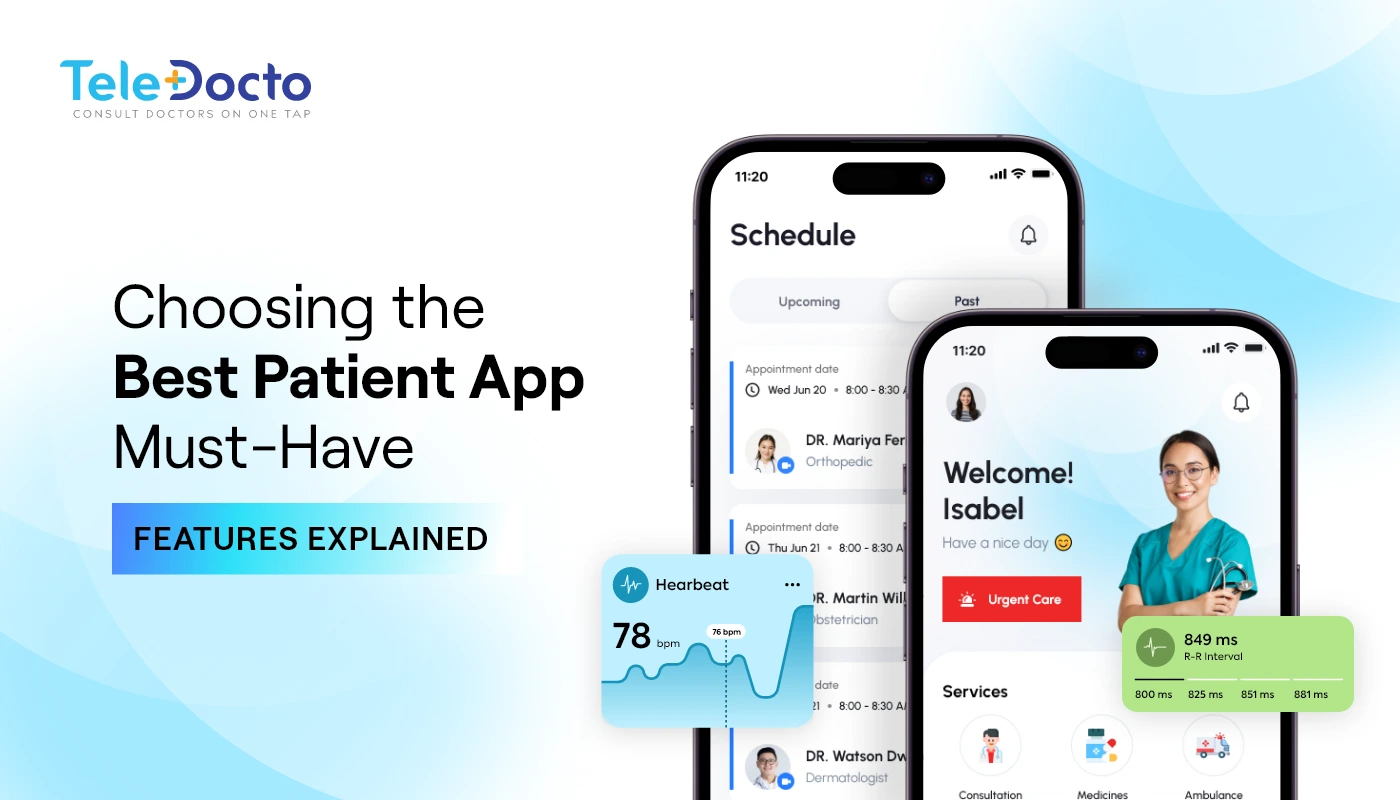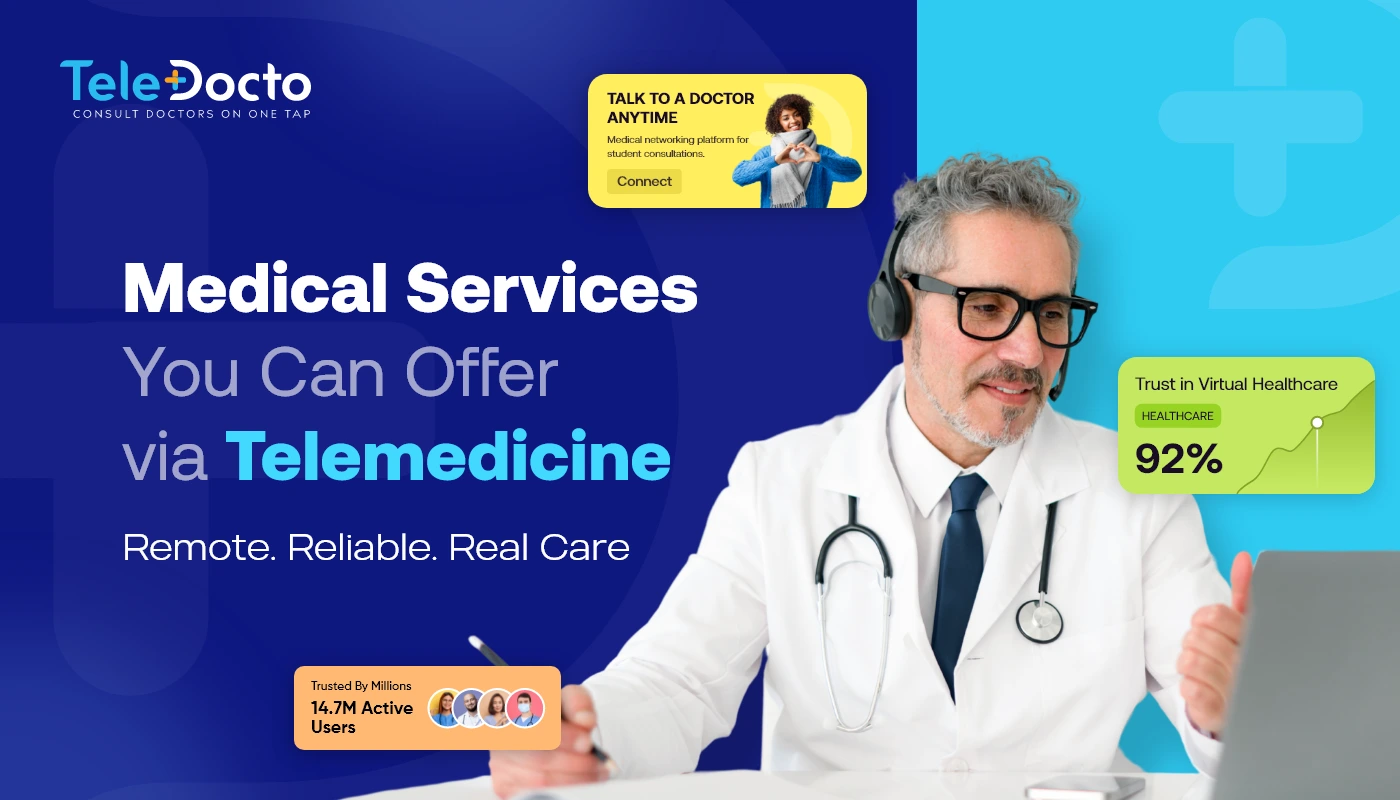
Scaling Provider Networks: Best Practices to Onboard and Retain Licensed Experts
Telemedicine has changed the way how patients connect with doctors. From routine check-ups to specialist consultations, more people now expect healthcare to be just a click away. But for hospitals, clinics & startups running a telemedicine platform, the real challenge isn’t just about having the technology. It’s about having enough qualified, licensed providers to meet patient demand – consistently, reliably & across specialties.
This is where scaling provider networks comes in. A strong network ensures patients get timely access, doctors feel supported, and the organization can truly compete with the best telemedicine platforms in the market. But scaling isn’t just about adding numbers. It requires smart onboarding processes, meaningful engagement & strategies to retain providers for the long run.
In this blog, we’ll walk through best practices to onboard and retain licensed experts – so your white label telehealth app or telemedicine platform for doctors can grow without losing quality of care.
Why Provider Networks Make or Break Telemedicine
Think about it: patients don’t sign up for a white label telehealth app because the software looks pretty. They stick with it because they can get to a doctor quickly, at a time that works for them & feel like their care is taken seriously.
A strong provider network means:
- Patients aren’t waiting hours in virtual queues.
- There’s enough coverage across time zones and states to meet licensing rules.
- Specialists are available for different needs-primary care, mental health, dermatology, pediatrics & more.
- Providers feel like they’re part of a system that respects their time and expertise.
That’s why even the best telemedicine platforms fail if the provider network isn’t managed well.
Onboarding: Getting Licensed Experts in the Door
Onboarding is the first impression. If it feels clunky or bureaucratic, providers lose interest fast.
Cut Down Credentialing Delays
Credentialing is necessary but often slow. No doctor wants to fill out endless forms only to wait weeks for approval. Using digital credentialing tools inside a telemedicine platform or partnering with verification services can speed this up. Automating background checks, license verification & malpractice history saves providers (and admins) a ton of time.
Make Training Simple
Even if you have the best telemedicine platform for doctors, there’s always a learning curve. Providers need to know how to start video consults, share prescriptions, upload reports & keep sessions HIPAA-compliant. Instead of handing them a PDF manual, offer short tutorials or live demo calls.
Give Providers a Personalized Onboarding Path
A pediatrician doesn’t need the same training as a therapist. Custom tracks make providers feel like you’ve thought about their needs. It’s a small effort that makes onboarding more human and less “corporate checklist.”
Keeping Providers Engaged (So They Don’t Leave)
Onboarding is one part of the story. The bigger task is keeping providers engaged and motivated so they don’t burn out or move on.
Flexibility Over Rigidity
One of the main reasons doctors choose digital platforms is flexibility. Let them decide their working hours instead of enforcing strict shifts. A white label telemedicine platform can be a true selling point if it gives providers that autonomy.
Fair and Transparent Pay
Compensation is always a sensitive subject. If payouts are unclear or delayed, providers leave. Make it simple-clear payment models, automated transfers & zero hidden deductions. This alone helps retention more than any fancy “provider wellness program.”
Build Feedback Loops
Doctors spend their days giving feedback to patients. Who listens to theirs? Set up regular check-ins or surveys to collect feedback on the platform, workflows, or patient interactions. But more importantly-act on it. If providers feel heard, they’ll invest in your ecosystem.
Create a Community
Working remotely can feel isolating. Providers on a telemedicine platform for doctors may never meet their peers. Hosting virtual meetups, discussion forums, or webinars helps them feel part of a bigger mission, not just a gig economy app.
Continuous Growth: Helping Providers Level Up
Healthcare is always evolving & so should your provider network. If doctors feel like they’re stagnating, they’ll look elsewhere.
- Offer CME credits through your telemedicine platform, so they can upskill while working.
- Expand specialty care options-train general practitioners to take on areas like chronic care management or mental health support.
- Technology refreshers-run quick sessions whenever new features are added to the white label telehealth app.
This investment not only improves patient care but also shows providers you care about their growth, not just their availability.
Don’t Forget Provider Well-Being
Let’s face it: healthcare burnout is real. Long hours, difficult cases & constant pressure take their toll. Telemedicine solves some problems (commute, admin tasks) but introduces others (screen fatigue, lack of boundaries).
What organizations can do:
- Keep caseloads balanced with smart scheduling.
- Offer mental health resources within the platform itself.
- Recognize providers who go above and beyond-sometimes just a “thank you” or spotlight goes further than financial incentives.
Providers who feel cared for give better care. It’s that simple.
Use Data to Improve, Not Just Monitor
Most white label telemedicine platforms collect tons of data-wait times, consultation numbers, patient ratings, etc. The trick is to use this data to make life easier for providers, not harder.
- Match supply and demand: Adjust scheduling so providers aren’t sitting idle while patients wait elsewhere.
- Spot early disengagement: If a provider logs fewer hours suddenly, check in before they quit.
- Quality insights: Use patient feedback constructively. Don’t turn it into a “performance review” weapon.
When data is framed as a support tool rather than surveillance, providers buy into it.
Compliance: The Hidden Backbone
Scaling providers across multiple regions is tricky. Each state or country has its own licensing and telehealth rules. If providers constantly worry about whether they’re operating legally, they won’t stick around.
Make compliance part of the support you offer:
- Help with multi-state licensing.
- Provide templates for informed consent.
- Keep your white label telemedicine platform updated with HIPAA/GDPR requirements.
When providers feel you’ve got their back legally, they focus on care, not paperwork.
Why White Label Matters for Retention
A generic platform is just another gig marketplace. But a white label telemedicine platform branded under a trusted hospital, clinic, or healthcare organization feels different.
For providers, it means:
- They’re part of a branded ecosystem with credibility.
- Patients see continuity of care under a known healthcare name.
- Policies, culture & community feel more aligned with their values.
That sense of belonging goes a long way in retaining licensed experts.
Retention Comes from Recognition and Growth
At the end of the day, retention isn’t just about pay checks. It’s about whether providers feel they’re growing in their careers.
- Offer leadership roles for experienced doctors.
- Involve them in testing new platform features.
- Support research and case studies so they can build credibility.
Retention is about building a future, not just maintaining the present.
What’s Next in Scaling Provider Networks
The future of telemedicine will make provider management even more data-driven. Imagine:
- AI automatically matching patients to the most suitable doctor based on specialty, outcomes & availability.
- Telemedicine platforms for doctors that integrate remote monitoring so providers can track chronic conditions seamlessly.
- Global expansion as countries open up their healthcare systems to cross-border telehealth.
Healthcare organizations that prepare for this shift-by investing in strong provider onboarding and retention strategies-will be the ones leading the industry.
Read More:- What Are Key Features to Look For in a Good Patient App?
In Summary
Scaling provider networks isn’t just about adding numbers. It’s about building a system where licensed experts feel supported, respected & motivated to stay. From smoother onboarding to real recognition and growth opportunities, every step matters.
If you’re running a white label telehealth app like TeleDocto, remember: your technology is only as good as the providers behind it. The real differentiator isn’t just features like HD video or digital prescriptions-it’s whether your provider network is strong enough to deliver great care, every single day. And that’s where the future of telemedicine will be decided.
Frequently Asked Question
Most providers leave because of unclear pay models, heavy caseloads, lack of flexibility or feeling disconnected from the larger organization. Retention comes down to fair compensation, good support, and community.
It varies. Credentialing and license verification can take a few days to a few weeks. With digital tools built into a white label telemedicine platform, the process can be much faster.
Engagement comes from flexibility, clear communication & regular recognition. Simple steps – like letting providers set their own schedules or giving feedback channels – make a big difference.
Not really. Most white label telehealth apps are designed to be user-friendly, but short training sessions help providers understand features like secure video calls, e-prescriptions & patient data management.
Yes. Even small clinics can scale by starting with a telemedicine platform for doctors, onboarding gradually & expanding coverage by specialty and geography. The key is building a system that supports both patients and providers.
Recent Blogs

Patients are no longer willing to stand in long queues or make endless calls just to schedule an appointment or check test results. A patient portal app changes this dynamic, putting essential healthcare services right into patients’ hands and making communication and care management seamless. It gives patients the same level of simplicity and ease […] Read more

Going to the doctor’s clinic is often challenging due to long travel distances, waiting times, and crowds there! It clears that the way traditional healthcare delivery was managed, has certain limitations. Enter telemedicine; not as a replacement, but as a modern upgrade to the healthcare department. From a general consult to specialist care, telemedicine has redefined […] Read more

Great design begins with understanding and research. Addressing user needs is crucial in starting a new project or revamping an existing one! Skipping user experience (UX) research early on can lead to expensive mistakes down the road. In healthcare, this step becomes even more critical—it ensures your product is user-friendly and avoids frustrating UX issues. […] Read more